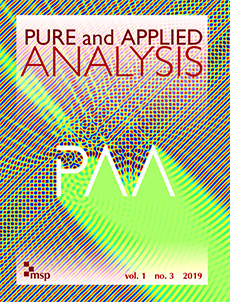Abstract
This paper is a mathematical analysis of conduction effects at interfaces between insulators. Motivated by work of Haldane and Raghu (2008), we continue the study of a linear PDE initiated by Fefferman, Lee-Thorp, and Weinstein (2016). This PDE is induced by a continuous honeycomb Schrödinger operator with a line defect.
This operator exhibits remarkable connections between topology and spectral theory. It has essential spectral gaps about the Dirac point energies of the honeycomb background. In a perturbative regime, Fefferman, Lee-Thorp, and Weinstein constructed edge states: time-harmonic waves propagating along the interface, localized transversely. At leading order, these edge states are adiabatic modulations of the Dirac-point Bloch modes. Their envelopes solve a Dirac equation that emerges from a multiscale procedure.
We develop a scattering-oriented approach that derives all possible edge states, at arbitrary precision. The key component is a resolvent estimate connecting the Schrödinger operator to the emerging Dirac equation. We discuss topological implications via the computation of the spectral flow, or edge index.
Citation
Alexis Drouot. "Characterization of edge states in perturbed honeycomb structures." Pure Appl. Anal. 1 (3) 385 - 445, 2019. https://doi.org/10.2140/paa.2019.1.385
Information





